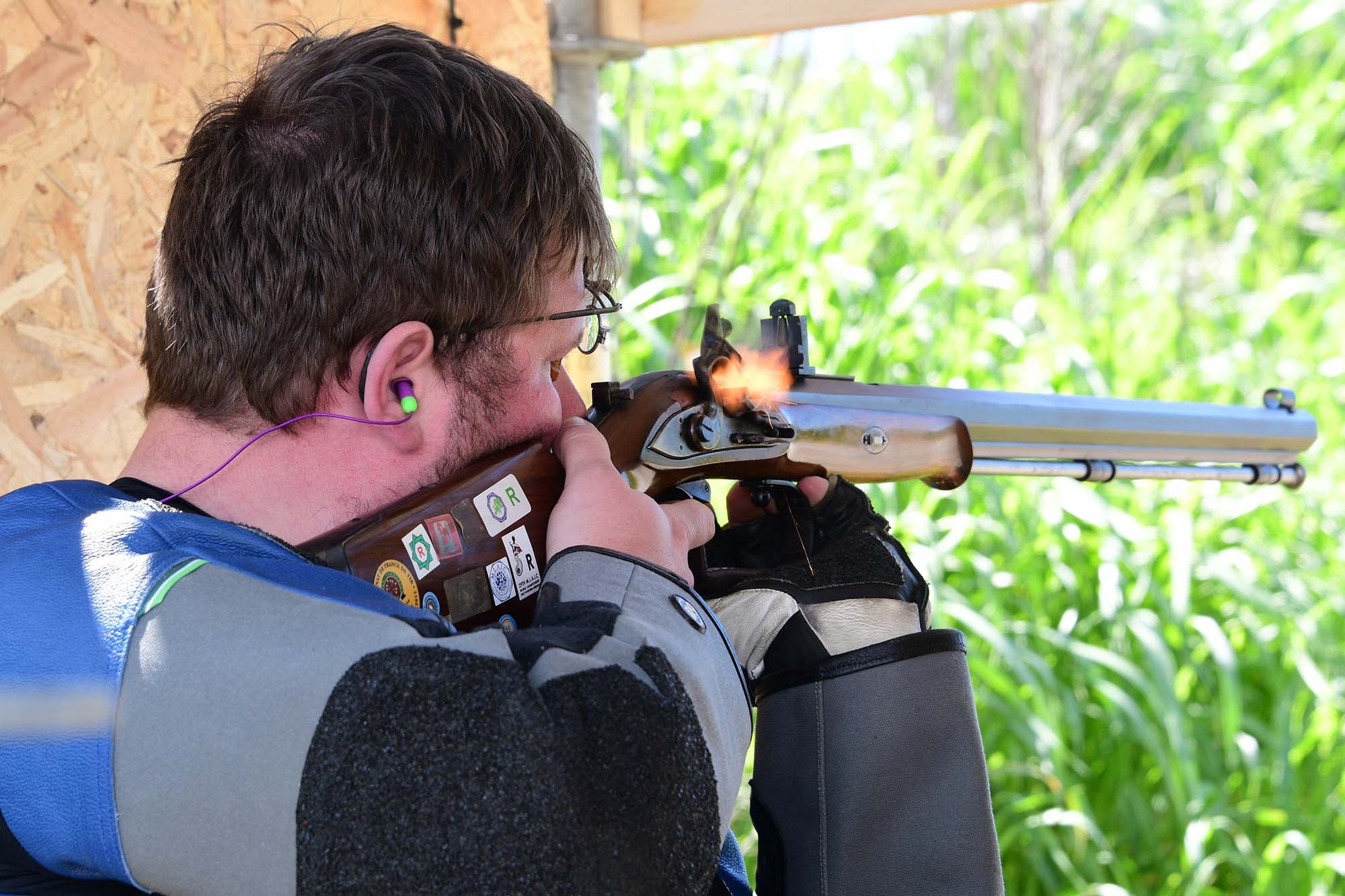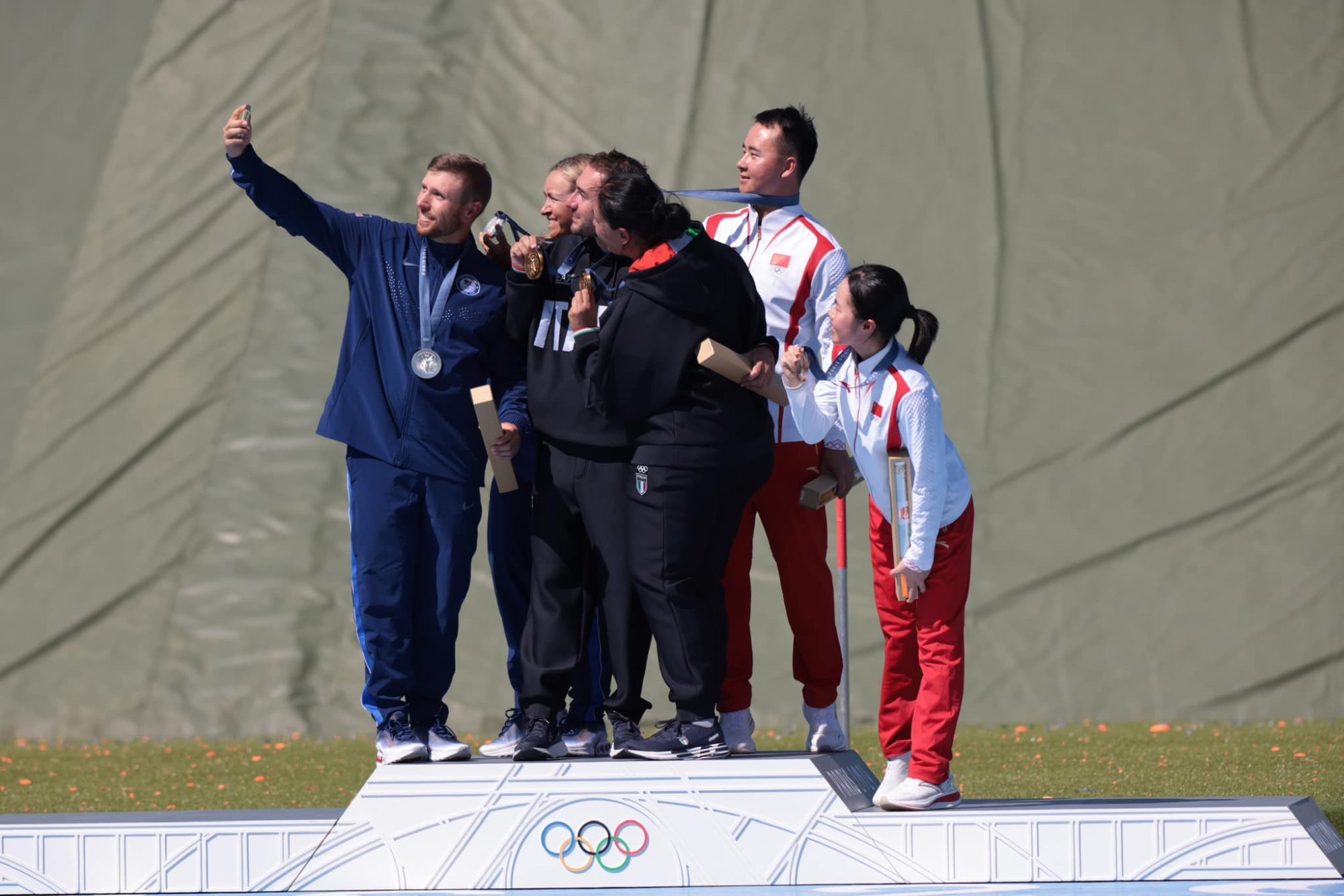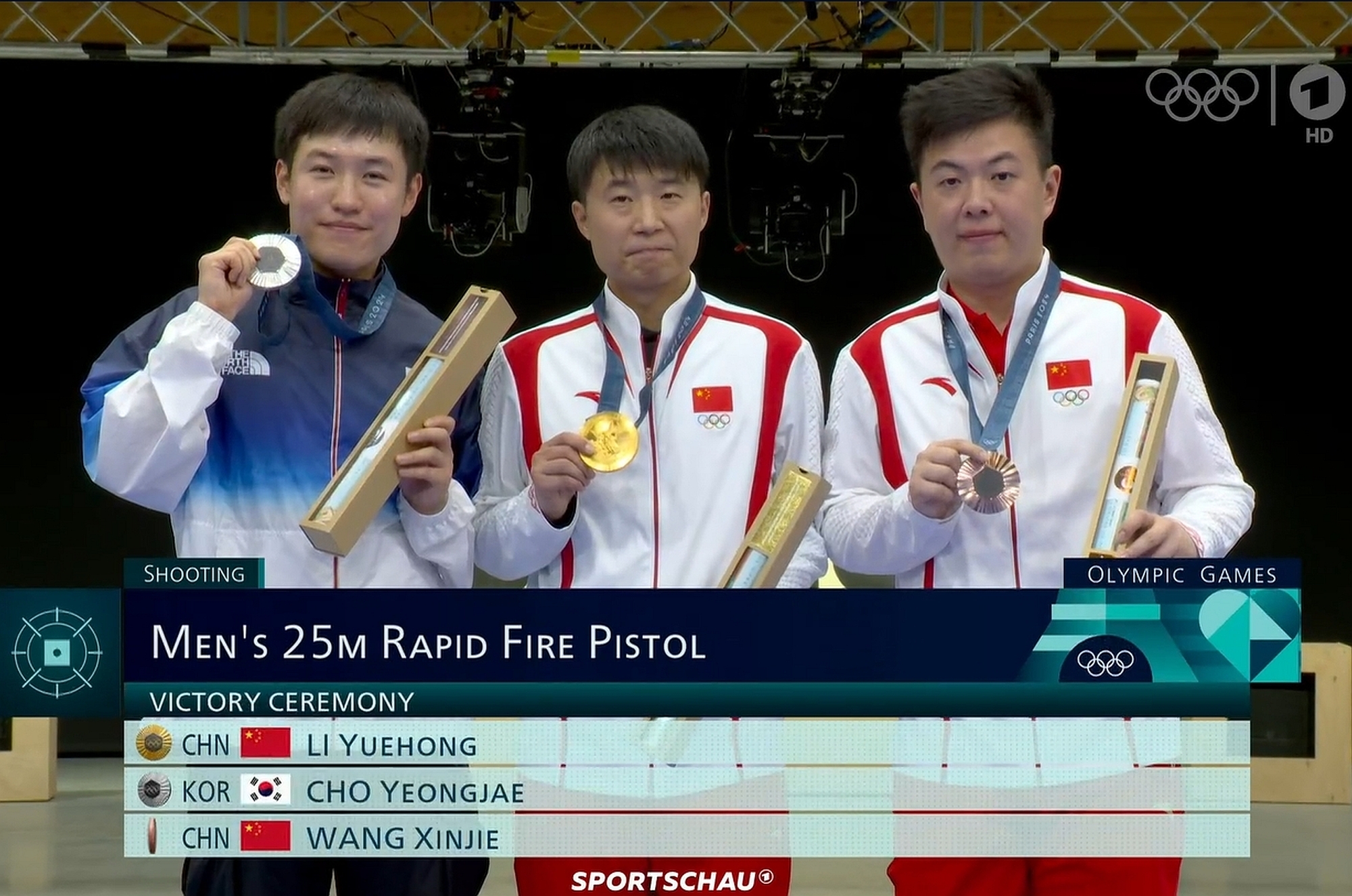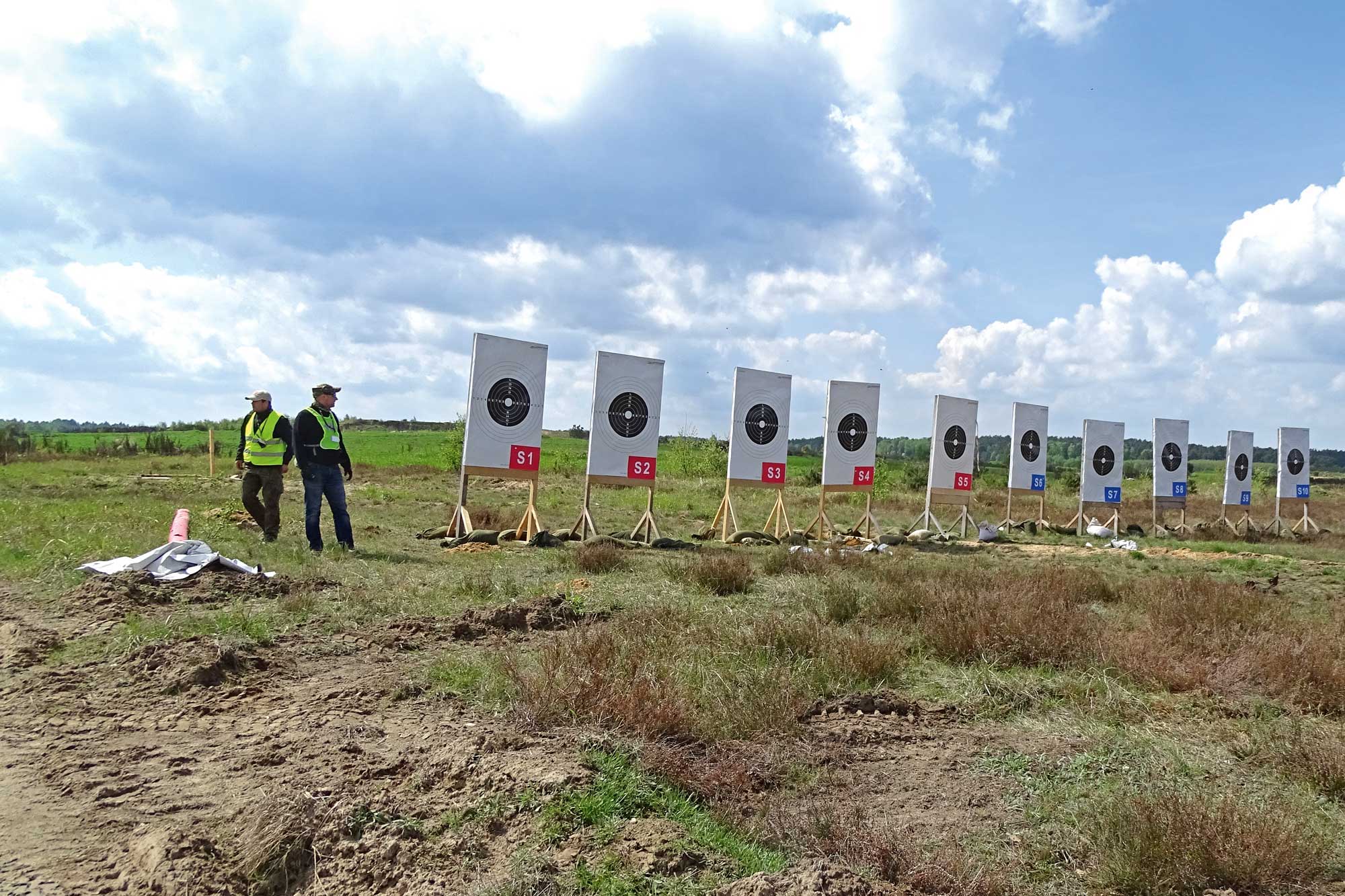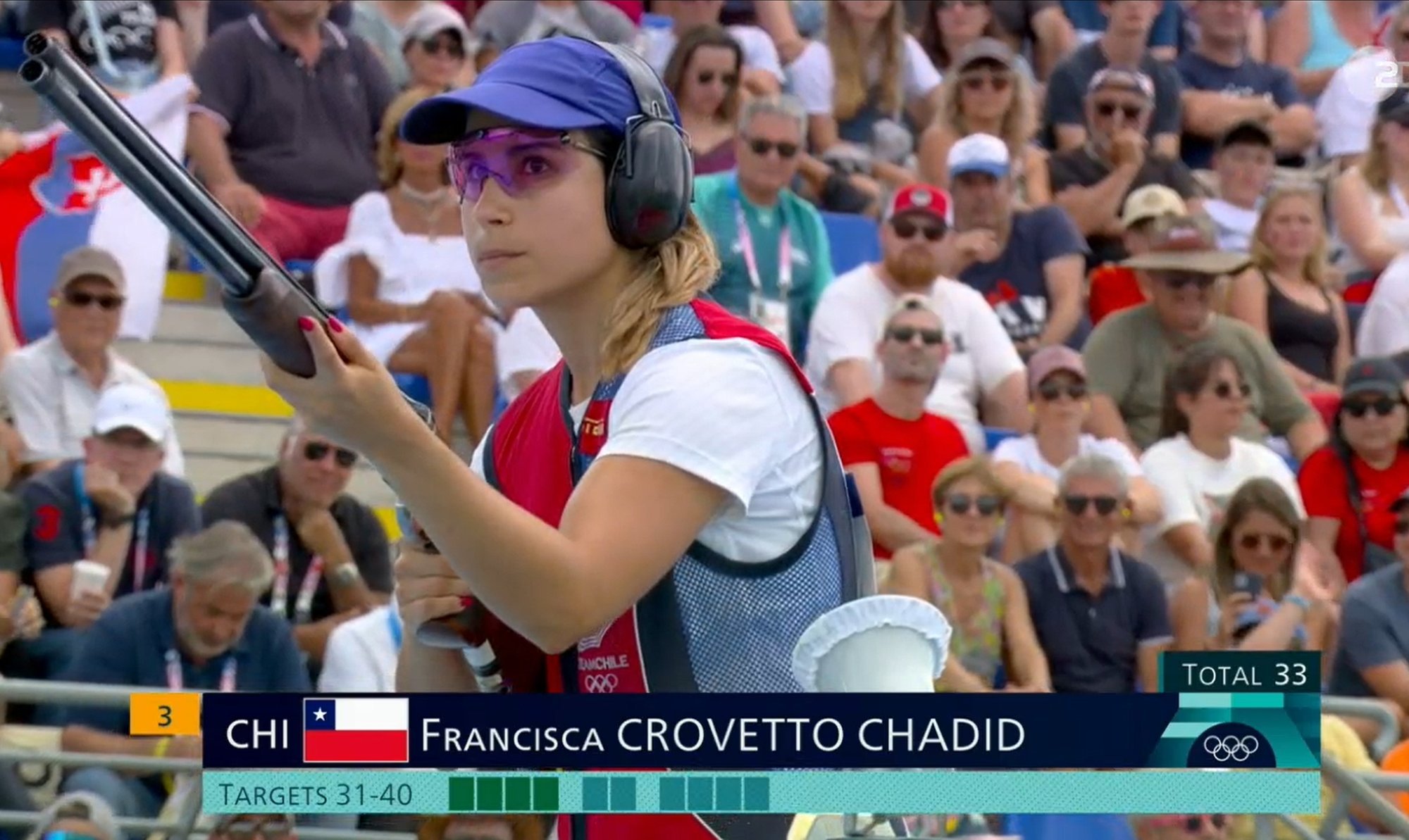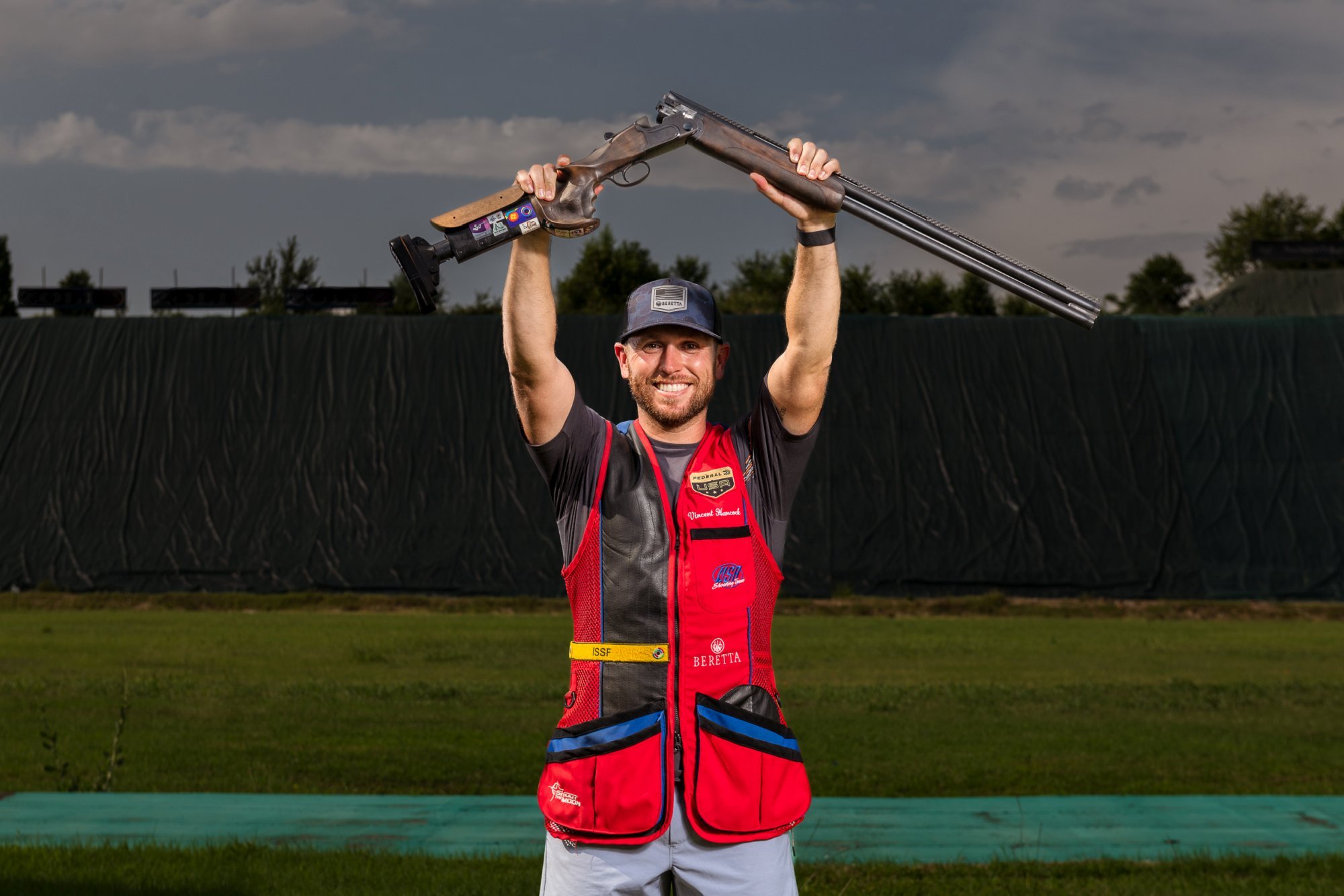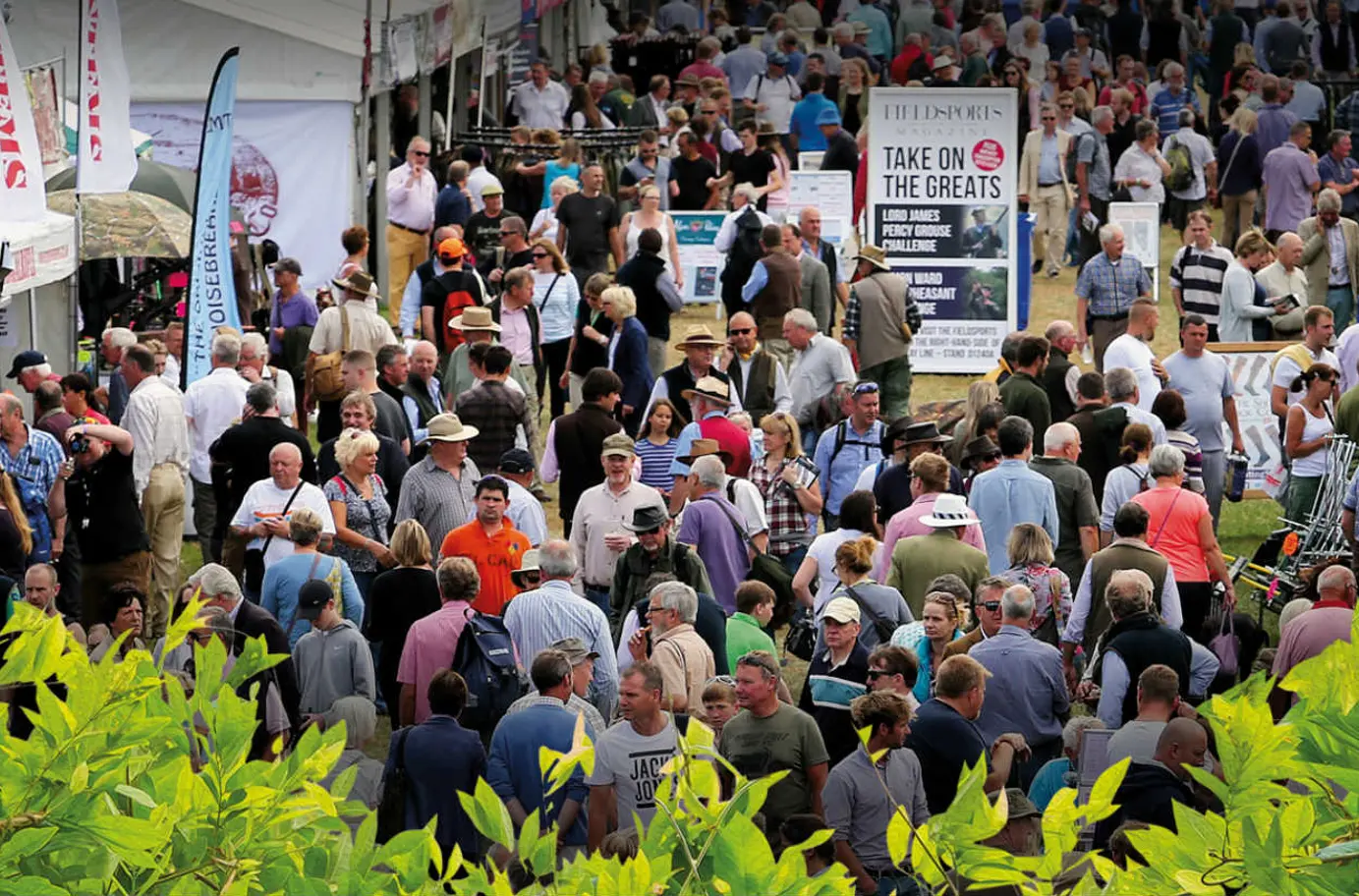
Skeet is the most popular clay pigeon discipline in the world and the one that most closely resembles hunting among the Olympic sports. That's because of the "swing" of the shooting movement and also the shotgun which, all things considered, is not too different from a hunting gun: 71-cm long barrels moderately choked, not too "straight" stock. It takes its origin from a remote US shooting discipline called "Shooting around the clock" in which the athlete would shoot from twelve positions marked off like the face of a clock: the idea was that the shooter would always have to face the same two types of clay throw, but from 12 different positions. Today's skeet involves eight stations, arranged in a semicircle with a radius of 19.20 meters, at the ends of which the "houses" with the throwing machines (traps) are located, one high and to the left, called Pull (or high house), and one low and to the right, called Mark (or low house).
You have to load and fire one shot for each single clay target and two shots for the doubles (released simultaneously from the two houses), depending on the station you are on. Height and direction of the targets are known: they are always thrown by the traps in the same way and always cross in the same area with a diameter of 0.90-0.95 m, located 4.60 m above the ground, outside of station 8, halfway between the two houses.
This is how skeet works
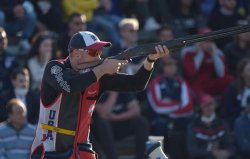
The difficulty in skeet is precisely the shooter's different positions in relation to the traps and the timing of the throw, which can vary from zero to three seconds from the call. The greatest difficulties are faced in the middle stations (3-4-5), where the angles are different.
In the ready position, the stock toe must be touching the body at a height corresponding horizontally to that of the point of the elbow. In ISSF competitions, this height is marked by a yellow tape on the athlete's vest. The Pull shot is always called first, except at Stations 5, 6 and 7, when the Mark's target is shot before the Pull's one.
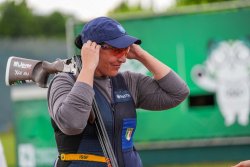
The formula described, in Olympic and generally in ISSF competitions, is for the first 125 targets, i.e. five series. The top six shooters from the qualification rounds advance to the final, with possible shoot-offs to break any tie and define bib numbers. For the final's 50 clay targets only, five doubles are fired at the three central stations, i.e. 3-4-5: ten clay pigeons divided between two doubles at 3 (first from Pull and then the reverse), one double at 4 (first from Pull) and two doubles at 5 (Mark and reverse). After the first 20 clay pigeons, the sixth-placed athlete is eliminated, and so on every 10 clay pigeons, i.e. every round. For victory, one more round is shot, reaching sixty clay pigeons. The rule of the highest bib number applies to determine elimination, to decide the gold medalists ties are broken by shoot-offs.
Techniques for being successful in skeet
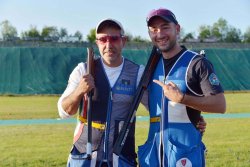
A distinction must be made between "outgoing" targets (the Pulls: those that, from station 1 to 4, go from left to right; the Marks, those that, from station 4 to 7, go from right to left) which must be hit in the center, and "incoming" plates (all the others), which must be hit at 3/4 of the field in order to memorise a firing time that is the same also in doubles. It is important to always remain relaxed in order to speed up the movement: in just 6 to 7 tenths of a second you have to evaluate the target, follow it, lead it and shoot. The technique known as "maintained lead" consists of always keeping the muzzles ahead of the target and pull the trigger: it is a fast shot, but frequently susceptible to error.
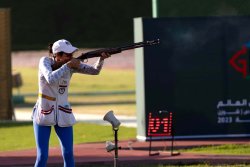
Instead, it is better to follow the target with the barrels, just overtake it and lead it, then shoot while continuing to rotate on the trunk for a very short time: it is the so-called "swing through" shot. The action is looser, more "continuous", less susceptible to error.
I mentioned the shotguns. The cartridges fire 24 grams of shot at 1,440 km/h (400 m/sec). The shot pattern is capable of shattering the clay target, which has a diameter of 110 mm, a height of 25 and a weight of 105 grams. Special targets, called "flash" clays, are also used for skeet in the finals, which produce a burst of "smoke", that is colored dust that is highly visible to television audience.
Paris 2024 Olympics: three days of fire at the end of July
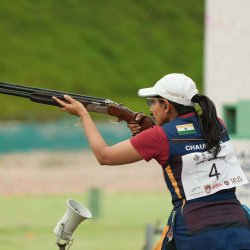
Skeet has been an Olympic discipline since 1968, when Russia's Yevgeny Petrov won in Mexico City. Men and women competed together, and the winner in Barcelona 1992 was China's Zhang Shan. Since the 2000 Sydney Olympics, with the victory of Azerbaijani Zemfira Meftahatdinova, the women's event has also been held. In Tokyo the US scored twice with Amber English and Vincent Hancock. In the women's field candidates to medal are Diana Bacosi, recent European champion, gold medallist in Rio and silver medallist in Tokyo, Britain's Amber Jo Rutter, Slovakia's Danka Bartekova, China's Mang Wei and Jinmei Gao, and the USA's Samantha Simonton and Dania Jo Vizzi. In the men's field, in addition to Hancock, a "monument" with three golds in Beijing, London and Tokyo, Gabriele Rossetti, gold in Rio, who seems to be on the upswing and should be in the lot, although he will have to contend with the other Italians Tammaro Cassandro and Luigi Lodde. Then Denmark's Jesper Hansen, silver in Tokyo, France's Eric Dleauney, who plays at home, and Egypt's Azmy Mehelba, world champion in 2022.
The skeet events in Paris begin on August 2, from 9 a.m. to 4 p.m., with the men's qualification, i.e. the first 75 clay pigeons in three series of 25, the following day the last two series of 25 from 9 a.m., and the final at 3.30 p.m. The women's competition also starts on the 3rd with the first 75 clay pigeons of Qualification day 1 and ends with the last 50 clay pigeons of Qualification day 2 and the final on the following day, also at 3.30 p.m.
During the weeks leading up to the Paris 2024 Olympics, we will regularly publish articles dedicated to the Olympic Games and shooting sports. We will make you live the Olympic dream until the lighting of the brazier and also afterwards, when it is time for the medals. Stay tuned!
To read the previous articles click here:
- It will be a global celebration of sports: here's what to know about the Paris 2024 Olympic Games for sport shooters
- Ten days of passion! Shooting competitions at the Paris 2024 Olympic Games from July 27 to August 5 in Châteauroux
- Paris 2024 Olympic Games: sport shooting events to begin on July 27, 2024 – Media coverage and time schedule
- Interview with Luciano Rossi, President of ISSF
- Shooting events at the Olympic Games: 10 meter air pistol, show and thrill are guaranteed
- Road to Paris – Trap: in the beginning they were glass target balls, which turned into clay pigeons
- Paris Olympics: the ISSF House in Châteauroux
- Shooting events at the Paris 2024 Olympics, pistols "on fire" at 25 meters
- 50m rifle three-positions: the most technical shooting event at the Paris Olympic Games 2023



